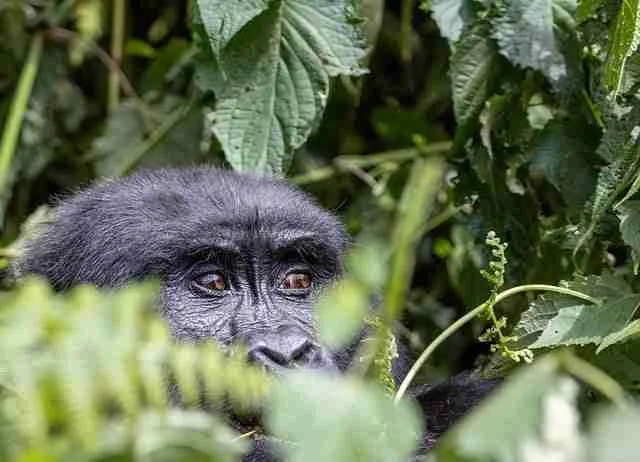Bwindi Impenetrable National Park

Uganda - What to see in Uganda - Bwindi Impenetrable National Park
Bwindi Impenetrable National Park: A Journey into Uganda’s Pristine Wilderness
Nestled in the misty highlands of southwestern Uganda, Bwindi Impenetrable National Park offers one of the most captivating wildlife experiences in Africa. This UNESCO World Heritage Site is renowned for its rich biodiversity, ancient rainforest, and the rare opportunity to encounter mountain gorillas in their natural habitat. Our guide explores the park’s highlights, conservation efforts, and how sustainable tourism supports local communities.
Discovering Bwindi’s Unique Landscape
Bwindi Impenetrable National Park spans approximately 331 square kilometres and sits on the edge of the Albertine Rift. Its terrain is rugged, with steep ridges and deep valleys cloaked in dense rainforest. The forest itself is thought to be over 25,000 years old, making it one of the most ancient ecosystems in East Africa.
This remarkable landscape supports a wide range of flora and fauna. Visitors can expect to see towering trees, cascading waterfalls, and lush undergrowth teeming with life. The park’s altitude ranges from 1,190 to 2,607 metres above sea level, offering a cool and comfortable climate for exploration.
Transitioning from one trail to another reveals new layers of biodiversity. Whether you're hiking through the Buhoma sector or exploring the southern reaches of Nkuringo, each path offers a distinct experience.
Gorilla Trekking: A Once-in-a-Lifetime Encounter
Bwindi Impenetrable National Park is best known for its mountain gorilla population. Nearly half of the world’s remaining mountain gorillas live here, with 20 habituated families available for trekking. Gorilla trekking is a regulated activity, designed to protect both the gorillas and their habitat.
Treks begin early in the morning from one of four sectors: Buhoma, Ruhija, Rushaga, and Nkuringo. Each group of visitors is assigned a gorilla family and guided by experienced rangers. The trek can last anywhere from two to six hours, depending on the location of the gorillas.
Once you reach the gorilla group, you’ll spend up to one hour observing their behaviour. Watching these gentle giants interact, forage, and care for their young is a deeply moving experience. It’s also a powerful reminder of the importance of conservation.
For those seeking a more immersive experience, the Gorilla Habituation Programme allows visitors to spend up to four hours with a gorilla family that is still becoming accustomed to human presence.
Beyond Gorillas: Wildlife and Birdwatching
While gorillas are the main attraction, Bwindi is home to a diverse array of wildlife. The park hosts over 120 species of mammals, including chimpanzees, forest elephants, bush pigs, and several monkey species. Birdwatchers will find paradise here, with more than 350 recorded bird species, including 23 Albertine Rift endemics.
Butterflies, reptiles, and amphibians also thrive in this rich ecosystem. The Rwenzori three-horned chameleon, for example, is a striking sight for those lucky enough to spot it.
Nature walks and hiking trails offer opportunities to explore these habitats more deeply. Trails like the River Ivi and the Waterfall Trail provide scenic routes through the forest, while the Muzabajiro Trail offers panoramic views of the Virunga Volcanoes.
Supporting Local Communities Through Tourism
Sustainable tourism is central to Bwindi’s success. The park’s management works closely with local communities to ensure that tourism benefits everyone. Revenue from gorilla permits is shared with nearby villages, funding schools, health centres, and infrastructure projects.
Community tourism initiatives allow visitors to engage with local culture. Guided village walks, craft workshops, and traditional performances offer insight into daily life. Many lodges and tour operators employ local staff, ensuring that tourism creates meaningful employment.
Eco-lodges such as Nkuringo Bwindi Gorilla Lodge and Mahogany Springs Lodge lead the way in sustainable practices. These accommodations use solar energy, harvest rainwater, and support community development projects.
Transitioning from forest exploration to cultural immersion adds depth to the travel experience. Visitors leave not only with memories but also with a sense of connection to the people who call Bwindi home.
Conservation and Responsible Travel
Bwindi Impenetrable National Park is a model of conservation. The Uganda Wildlife Authority enforces strict guidelines to protect the gorillas and their habitat. Visitor numbers are limited, and health protocols are in place to prevent disease transmission.
Anti-poaching patrols, habitat restoration, and veterinary care are part of ongoing efforts to safeguard the park’s biodiversity. Gorilla trekking permits help fund these initiatives, making tourism a vital tool for conservation.
Travellers are encouraged to follow responsible travel practices. This includes maintaining a safe distance from wildlife, avoiding single-use plastics, and respecting local customs. By choosing ethical tour operators and eco-friendly lodges, visitors contribute to the park’s long-term sustainability.
Transition words like “furthermore” and “in addition” help guide travellers through these important considerations. Responsible travel ensures that Bwindi remains a sanctuary for future generations.
Planning Your Visit
Bwindi Impenetrable National Park is accessible by road from Kampala and Kigali. Internal flights to Kihihi or Kisoro offer quicker options, followed by transfers to lodges near the park. It’s essential to book gorilla permits well in advance, especially during peak seasons from June to August and December to February.
Accommodation ranges from budget-friendly guesthouses to luxury eco-lodges. Each sector of the park offers different experiences, so choosing the right location depends on your interests and fitness level.
Packing for your trek requires careful preparation. Recommended items include sturdy hiking boots, waterproof clothing, gloves, and a reusable water bottle. Hiring a porter can make the trek more manageable and supports local livelihoods.
Transitioning from planning to arrival, travellers should also consider travel insurance, vaccinations, and local currency exchange. These practical steps help ensure a smooth and enjoyable journey.
Final Thoughts: Why Bwindi Matters
Bwindi Impenetrable National Park is more than a travel destination. It’s a living example of how conservation, community, and tourism can work together. The park protects endangered species, supports local development, and offers unforgettable experiences to those who visit.
By choosing to explore Bwindi, travellers become part of a global effort to preserve one of the world’s most important ecosystems. Every trek, every stay, and every respectful interaction contributes to a brighter future for the forest and its inhabitants.
Whether you're drawn by the chance to see mountain gorillas or inspired by the park’s commitment to sustainability, Bwindi Impenetrable National Park offers a journey that’s both meaningful and memorable.
